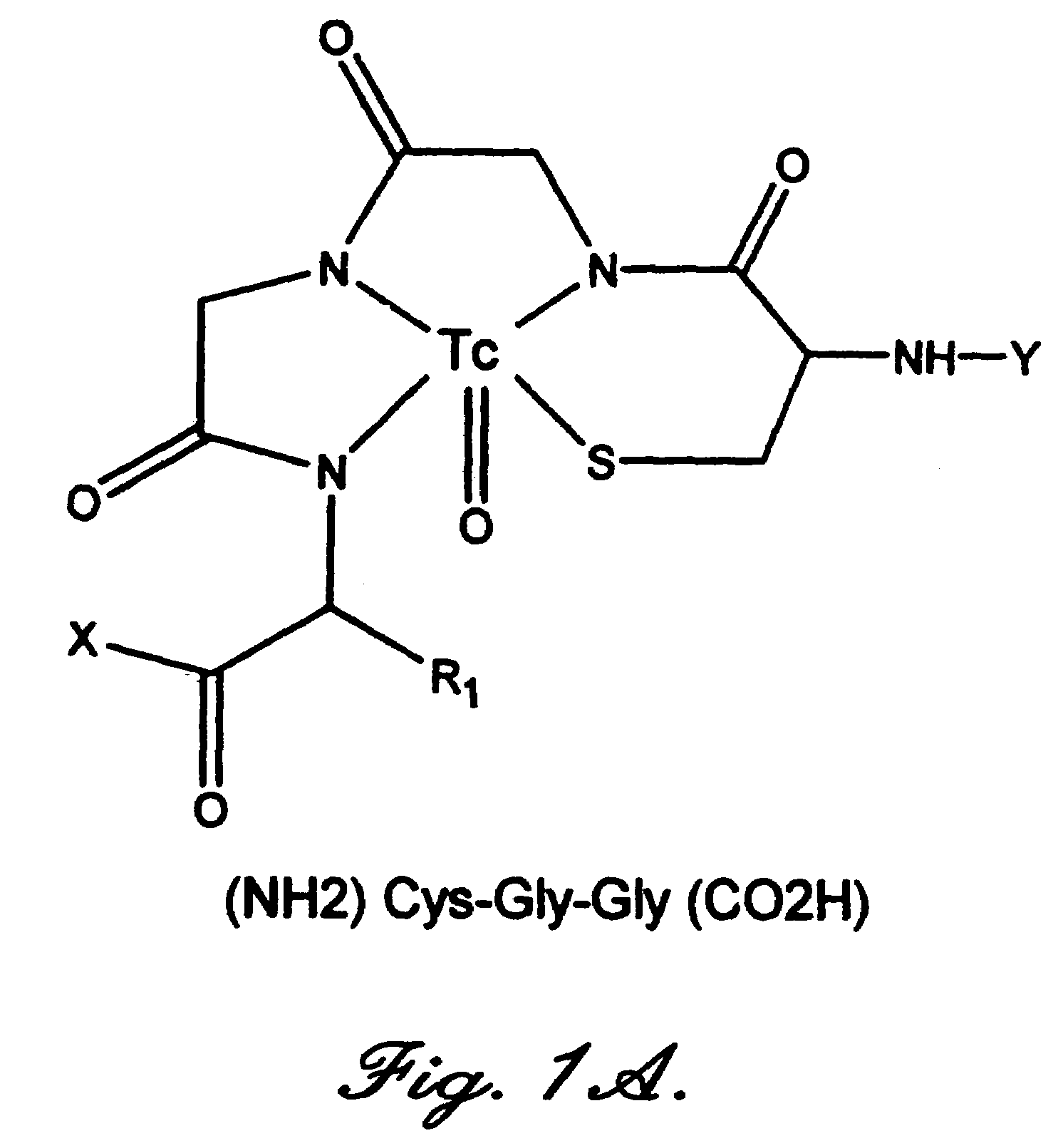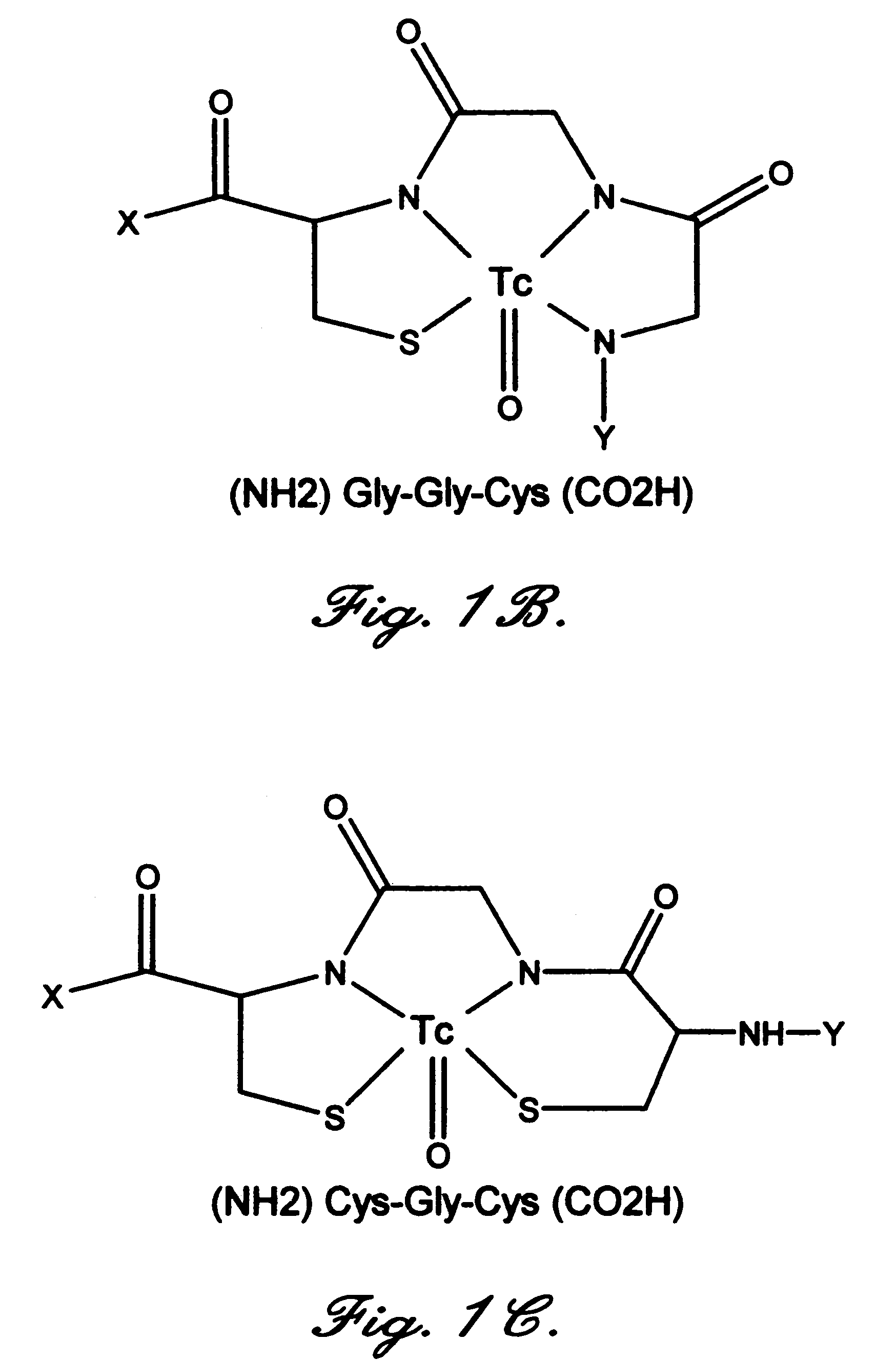Annexin derivatives with endogenous chelation sites
a technology of annexin derivatives and endogenous chelation sites, which is applied in the field of annexin derivatives having chelation sites and radiolabeled annexin derivatives, can solve the problems of inability to detect thrombosis with good sensitivity and specificity, inability to image arterial thrombosis, and limited value of available non-invasive techniques
- Summary
- Abstract
- Description
- Claims
- Application Information
AI Technical Summary
Benefits of technology
Problems solved by technology
Method used
Image
Examples
example 1
Construction and Verification of Plasmids
[0044]Four plasmids were constructed to express mutant forms of annexin V in E. coli under control of the phage T7 promoter. The parent expression vector was pET12a, available from Novagen Corporation (Madison, Wis.).
[0045]a. Construction of Expression Vector pJ115, Encoding Annexin V-115 With Cys-316->Ser Mutation (Position 316 Refers to Wild-Type Annexin V).
[0046]A 232-bp BstBI-BamHI restriction fragment was first isolated from plasmid pANXVC-S-N6, also known as pJ110, which encodes a modified annexin V with the Cys-316->Ser mutation. Tanaka K., et al., “Preparation and characterization of a disulfide-linked bioconjugate of annexin V with the B-chain of urokinase: an improved fibrinolytic agent targeted to phospholipid-containing thrombi,”Biochemistry, 1996; 35:922–9. The same restriction fragment was then removed from plasmid pET12a-PAP1 (FIG. 2) (Wood, B. L., et al., “Increased erythrocyte phosphatidylserine exposure in sickle cell diseas...
example 2
Expression and Purification of Proteins
[0050]Plasmids pJ116, pJ117, and pJ118 were each transformed into E. coli strain BL21(DE3) for cytoplasmic expression. Each resulting clone was grown overnight to saturation at 37° C. with shaking in Terrific Broth containing carbenicillin (50 μg / ml). The cells were then separated from culture medium by centrifugation for 10 min at 2560×g and washed in ice-cold buffer (50 mmol / L Tris HCl, 150 mmol / L NaCl pH 8.0). Bacteria were then disrupted by sonication in ice-cold 50 mmol / L Tris HCl pH 7.2, 10 mmol / L CaCl2, 1 mmol / L β-mercaptoethanol, and then centrifuged for 20 min at 22,530×g. The supernatant was discarded and the annexin V bound to bacterial membranes was released by resuspending the pellet in 50 mmol / L Tris HCl pH 7.2, 20 mmol / L EDTA, 1 mmol / L β-mercaptoethanol. Bacterial membranes were then removed by centrifugation for 20 min at 22,530×g and the supernatant containing the annexin V was dialyzed against 20 mmol / L Tris HCl pH 8.0, 1 mmol...
example 3
Technetium Labeling of Representative Modified Annexins
[0051]A representative procedure for technetium labeling of the modified annexins prepared as described above is as generally described in Larsen et al., “[99mTc]Tricine: A useful precursor complex for the radiolabeling of hydrazinonicotinate protein conjugates,”Bioconjugate Chem., 6:635–638, 1995, and Blankenberg et al., “In vivo detection and imaging of phosphatidylserine expression during programmed cell death,”Proc. Natl. Acad. Sci. U.S.A., 95:6349–6354, 1998, both expressly incorporated herein by reference.
[0052]Briefly, annexin is first reduced with dithiothreitol and then labeled with technetium.
[0053]Dithiothreitol Reduction:
[0054]1. Add dithiothreitol (100 mM in water) to annexin stock solution (3–8 mg / ml in 20 mM HEPES-Na pH7.4, 100 mM NaCl) to 1 mM final concentration. For example, to 600 μg of annexin in 200 μg add 2 μl of 100 mM dithiothreitol.
[0055]2. Incubate 15 min at 37° C.
[0056]3. Purify by gel filtration on Se...
PUM
| Property | Measurement | Unit |
|---|---|---|
| body weight | aaaaa | aaaaa |
| pH | aaaaa | aaaaa |
| pH | aaaaa | aaaaa |
Abstract
Description
Claims
Application Information
 Login to View More
Login to View More - R&D
- Intellectual Property
- Life Sciences
- Materials
- Tech Scout
- Unparalleled Data Quality
- Higher Quality Content
- 60% Fewer Hallucinations
Browse by: Latest US Patents, China's latest patents, Technical Efficacy Thesaurus, Application Domain, Technology Topic, Popular Technical Reports.
© 2025 PatSnap. All rights reserved.Legal|Privacy policy|Modern Slavery Act Transparency Statement|Sitemap|About US| Contact US: help@patsnap.com



